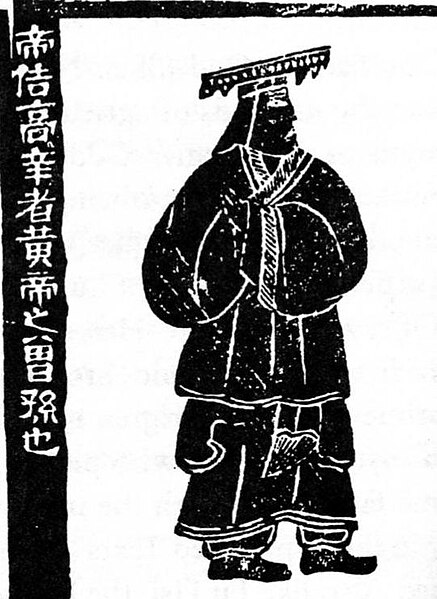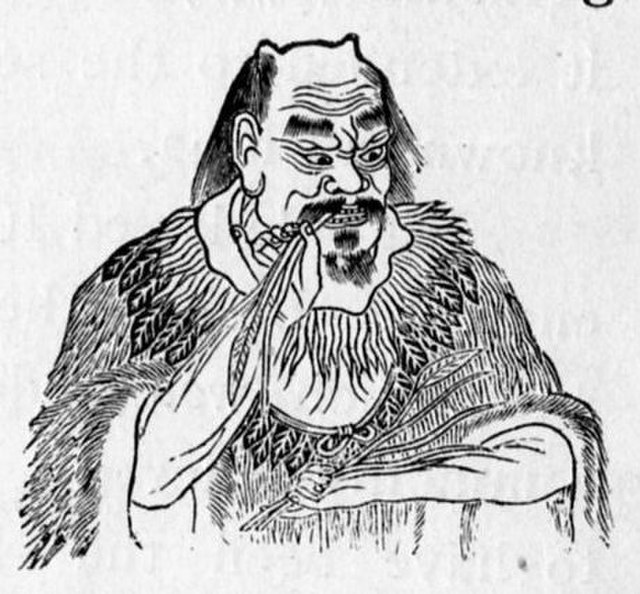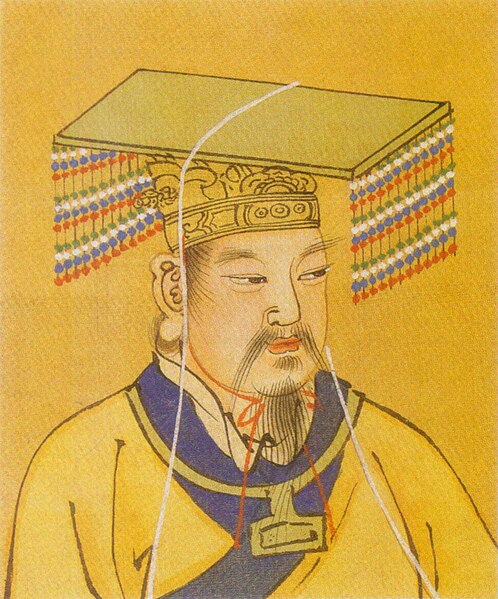Kù, usually referred to as Dì Kù, also known as Gaoxin or Gāoxīn Shì or Qūn, was a descendant of the Yellow Emperor.
He went by the name Gaoxin until receiving imperial authority, when he took the name Ku and the title Di, thus being known as Di Ku. He is considered the ancestor of the ruling families of certain subsequent dynasties. Some sources treat Ku as a semi-historical figure, while others make fantastic mythological or religious claims about him. Besides varying in their degree of historicizing Ku, the various sources also differ in what specific stories about him they focus on, so that putting together the various elements of what is known regarding Ku results in a multifaceted story. Di Ku was one of the Five Emperors of the Three Sovereigns and Five Emperors of Chinese mythology. Ku, or Gaoxin, is also known as the "White Emperor".
Han dynasty depiction of Ku
As depicted in the album Portraits of Famous Men c. 1900, housed in the Philadelphia Museum of Art
Three Sovereigns and Five Emperors
According to Chinese mythology and traditional Chinese historiography, the Three Sovereigns and Five Emperors were a series of sage rulers, and the first Emperors of China. Today, they are considered culture heroes, but they were widely worshipped as divine "ancestral spirits" in ancient times. According to received history, the period they existed in preceded the Xia dynasty, although they were thought to exist in later periods to an extent in incorporeal forms that aided the Chinese people, especially with the stories of Nüwa existing as a spirit in the Shang dynasty and Shennong being identified as the godly form of Hou Ji and a founder of the Zhou dynasty.
The Hall of the Three Sovereigns in Changchun Si (长春寺), a Taoist temple in Wuhan
Shennong tasting herbs to discover their qualities
Historian's depiction of the Yellow Emperor
Another depiction of the Yellow Emperor






